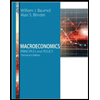• Assuming that there is no government spending or trade, an economy's GDP is the sum of domestic consumption C and investment I, ie. Y = C+I • Assume that I is unaffected by GDP • Assume the consumption function is C = co + cY • In any equilibrium aggregate demand, AD must be equal to Y, GDP. Given this model, which of the following statements is correct? I Select one or more: O a. The aggregate demand equation is given by AD = Co + CY + I O b. C is equal to autonomous consumption Oc. if c, is a number between 0 and 1, and I+Co >0 then the aggregate demand equation is a straight line that must intersect the 45 degree line at some point. O d. In a demand-driven economy the AD curve is a vertical line D e. In a demand-driven economy demand is equal to supply in equilibrium O f. In a supply-driven economy demand is equal to supply in equilibrium In a demand-driven economy, supply creates its own demand O h. If the economy above is a demand-driven economy, then the equilibrium solution for Y is given by Y = (Co + D/(1-C).
• Assuming that there is no government spending or trade, an economy's GDP is the sum of domestic consumption C and investment I, ie. Y = C+I • Assume that I is unaffected by GDP • Assume the consumption function is C = co + cY • In any equilibrium aggregate demand, AD must be equal to Y, GDP. Given this model, which of the following statements is correct? I Select one or more: O a. The aggregate demand equation is given by AD = Co + CY + I O b. C is equal to autonomous consumption Oc. if c, is a number between 0 and 1, and I+Co >0 then the aggregate demand equation is a straight line that must intersect the 45 degree line at some point. O d. In a demand-driven economy the AD curve is a vertical line D e. In a demand-driven economy demand is equal to supply in equilibrium O f. In a supply-driven economy demand is equal to supply in equilibrium In a demand-driven economy, supply creates its own demand O h. If the economy above is a demand-driven economy, then the equilibrium solution for Y is given by Y = (Co + D/(1-C).
Chapter11: Managing Aggregate Demand: Fiscal Policy
Section: Chapter Questions
Problem 2TY
Related questions
Question

Transcribed Image Text:• Assuming that there is no government spending or trade, an economy's GDP is the sum of domestic consumption C
and investment I, ie. Y = C+ 1
of
• Assume that I is unaffected by GDP
• Assume the consumption function is C = co + cY
• In any equilibrium aggregate demand, AD must be equal to Y, GDP.
Given this model, which of the following statements is correct?
Select one or more:
O a. The aggregate demand equation is given by AD = Co + CY + I
%3D
O b. C is equal to autonomous consumption.
O c. if c is a number between 0 and 1, and I+Co >0 then the aggregate demand equation is a straight line that must
intersect the 45 degree line at some point.
O d. In a demand-driven economy the AD curve is a vertical line
Oe. In a demand-driven economy demand is equal to supply in equilibrium
Of. In a supply-driven economy demand is equal to supply in equilibrium
g. In a demand-driven economy, supply creates its own demand
Oh. If the economy above is a demand-driven economy, then the equilibrium solution for Y is given by Y = (co+
I)/(1-c, ).
Expert Solution
This question has been solved!
Explore an expertly crafted, step-by-step solution for a thorough understanding of key concepts.
Step by step
Solved in 2 steps with 2 images

Knowledge Booster
Learn more about
Need a deep-dive on the concept behind this application? Look no further. Learn more about this topic, economics and related others by exploring similar questions and additional content below.Recommended textbooks for you







Macroeconomics: Principles and Policy (MindTap Co…
Economics
ISBN:
9781305280601
Author:
William J. Baumol, Alan S. Blinder
Publisher:
Cengage Learning


Principles of Economics 2e
Economics
ISBN:
9781947172364
Author:
Steven A. Greenlaw; David Shapiro
Publisher:
OpenStax